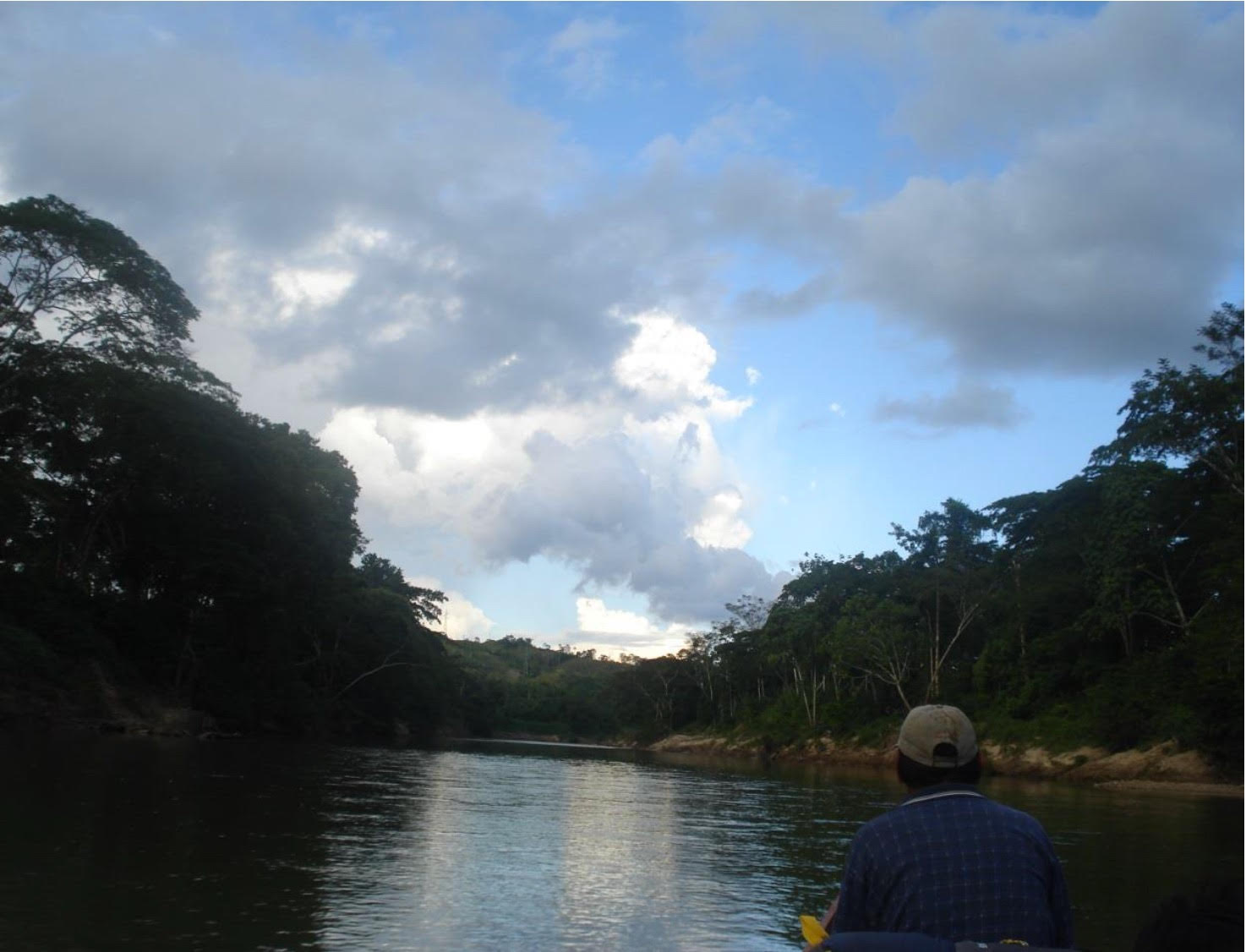A documentation of Cashibo-Cacataibo of San Alejandro (Pano) with a Focus on Information Structure

Landing page image for the collection “A Documentation of Cashibo-Cacataibo of San Alejandro (Pano) with a Focus on Information Structure”. Click on image to access collection.
| Language | Cashibo-Cacataibo |
| Depositor | Daniel Valle |
| Affiliation | University of Texas at Austin |
| Location | Peru |
| Collection ID | 0315 |
| Grant ID | IGS0165 |
| Funding Body | ELDP |
| Collection Status | Collection online |
| Landing Page Handle | http://hdl.handle.net/2196/ffbff1ea-e1c7-408c-a770-8337f5564145 |
Summary of the collection
This project produced a collection of transcribed and analyzed narratives and conversations from the San Alejandro dialect of Cashibo-Cacataibo (CBR), an endangered Panoan language spoken by 1500 people in Peru. The narratives and conversations are the source for a sketch grammar, a description of Information Structure, and a vocabulary of the language which will be distributed to the community and Cashibo-Cacataibo organizations. The urgency of documentation of this dialect is motivated by rapid socio-economic changes that threaten the vitality of the language.
Group represented
Cashibo-Cacataibo people traditionally followed a low-density settlement pattern and practiced
nomadism (Erikson 1993). These settlements were comprised of approximately 150 individuals who inhabited in a single large community house. They followed an annual circuit of nomadism, motivated by their need to gather seasonal goods from the forest and look for game animals. These settlement patterns accentuated the linguistic differences among the Cashibo-Cacataibo dialects due to the low degree of interaction with speakers of the other dialects.
Cashibo-Cacataibo is spoken by approximately 1500 individuals of which around 500 live in the Sinchi Roca community in the San Alejandro river. Adult male speakers are bilingual in Cashibo-Cacataibo and Spanish while female speakers are monolingual in the native language. While children traditionally learnt only Cashibo-Cacataibo, they now learn Spanish in addition to their native language. Although the Cashibo-Cacataibo is used as a means of everyday communication, it is not used in school or for business purposes. Further, there is a notable influence of Spanish into Cashibo-Cacataibo which is mainly manifested in borrowing of lexical items and basic morpho-syntactic features. This influence of Spanish into Cashibo-Cacataibo will likely become more evident due to a number of socio-economic factors such as the exploration and exploitation of natural gas, the increase of trade in the region, the construction of a road nearby the native community, and a stronger presence of the Peruvian Government in the region. These facts will certainly affect the contexts in which Cashibo-Cacataibo and Spanish are used as well as the choice of first language.
Language information
Cashibo-Cacataibo (cbr) is a Panoan language spoken by approximately 1500 people (Frank 1994) in the western slopes of the Andes in Peru. Cashibo-Cacataibo speakers live in eight native communities scattered through the Peruvian regions of Ucayali and Huánuco: Santa Martha, Unipacuyacu, Shambo Porvenir, Mariscal Cáceres, Puerto Azul, Puerto Nuevo, Sinchi Roca and Sinchi Roca II
Shell (1985) suggests that Cashibo-Cacataibo is the most divergent language from proto-Pano based on phonological (and some grammatical) innovations stemming from a phonological reconstruction. Also, d’Ans (1972) classifies Cashibo-Cacataibo as the only member of the pre-Andean group of Panoan languages while all other languages of the family are spoken in the Amazonian low-lands. These linguistic and geographic differences of Cashibo-Cacataibo with respect to other Panoan languages make it a key to understanding the historical development of Panoan languages. Three dialects of Cashibo-Cacataibo which are mutually intelligible are recognized in the literature (d’Ans 1972, Shell 1985 and Tessman 1999): Cashibo, Runo and Cacataibo. Tessman suggests that the Cashibo and Runo groups have a closer link between them than with the Cacataibo dialect.
The Cacataibo dialect is spoken in the native communities of Sinchi Roca, Sinchi Roca II and Puerto Nuevo along the San Alejandro river in the province of Padre Abad, in the region of Ucayali. The number of speakers of this dialect is an estimated 500.
Collection contents
The collection contains recordings of a variety of genres such as narratives (e.g. traditional stories, autobiographies and procedural), conversations, songs and public announcements.
Other information
From the depositor: ‘In the last years, I have collaborated with the Applied Linguistics Center of Investigation (CILA) and Universidad Nacional Mayor de San Marcos in socio-linguistic evaluations aimed at improving the bilingual education in Cashibo-Cacataibo schools and also in the development of an official alphabet of the language. In collaboration with those institutions, I have given workshops to the Sinchi Roca community to promote the use of the alphabet and literacy in the community.’
Acknowledgement and citation
To refer to any data from the collection, please cite as follows:
Valle, Daniel. 2012. A Documentation of Cashibo-Cacataibo of San Alejandro (Pano) with a Focus on Information Structure. Endangered Languages Archive. Handle: http://hdl.handle.net/2196/00-0000-0000-0002-B9B4-3. Accessed on [insert date here].


